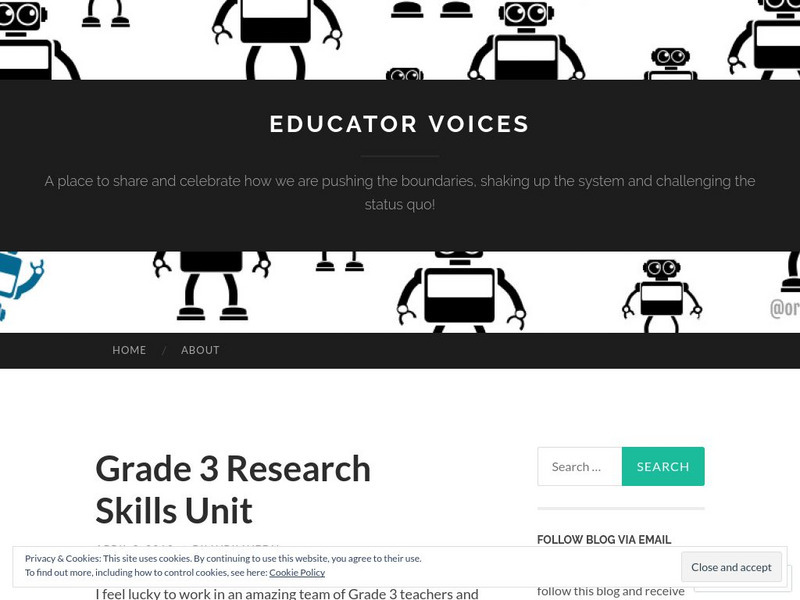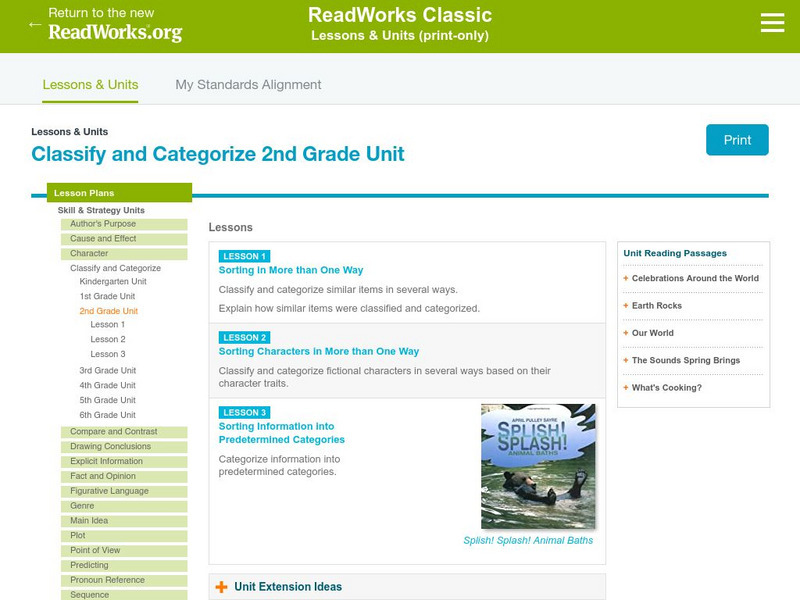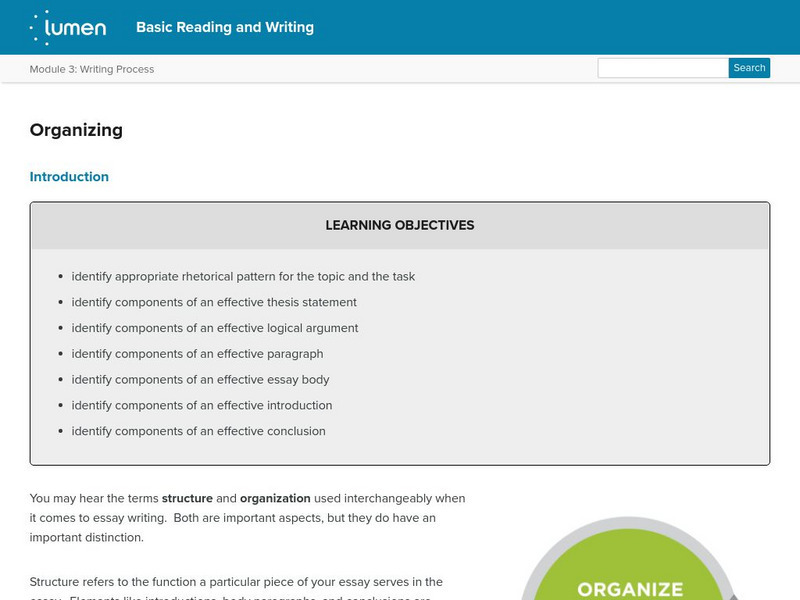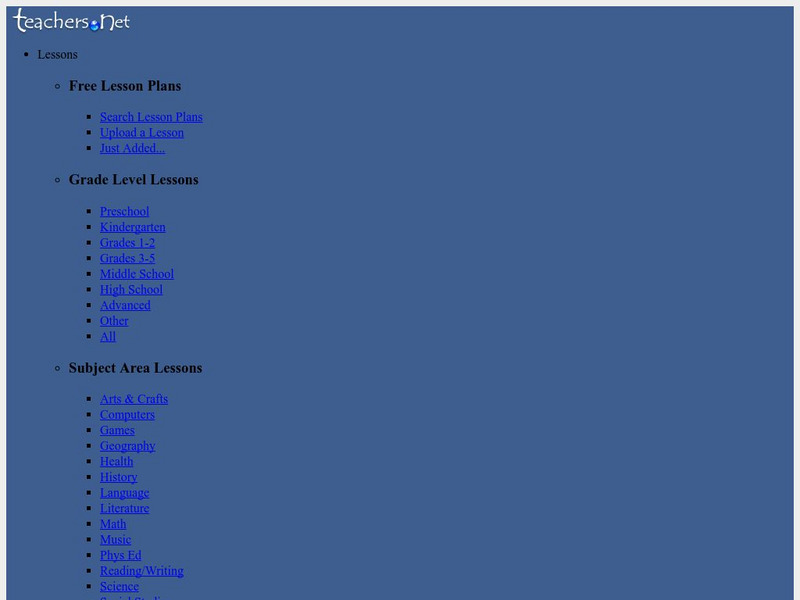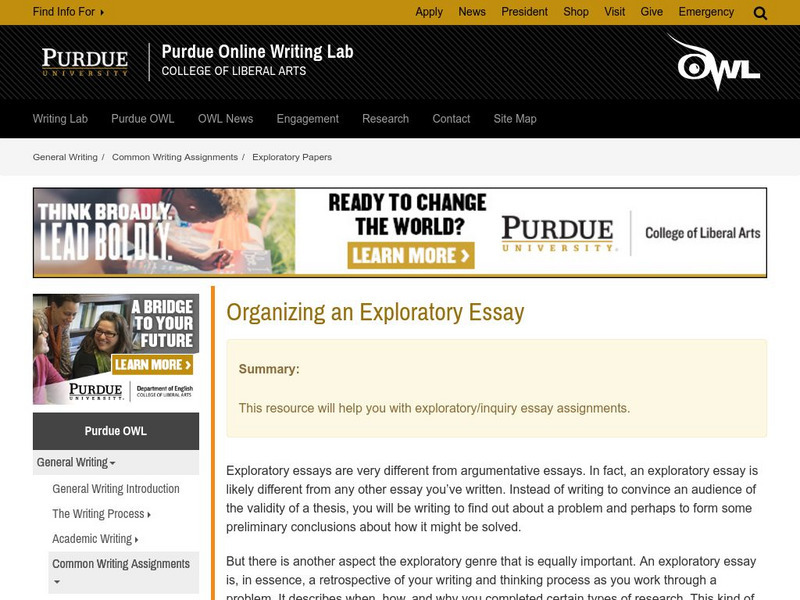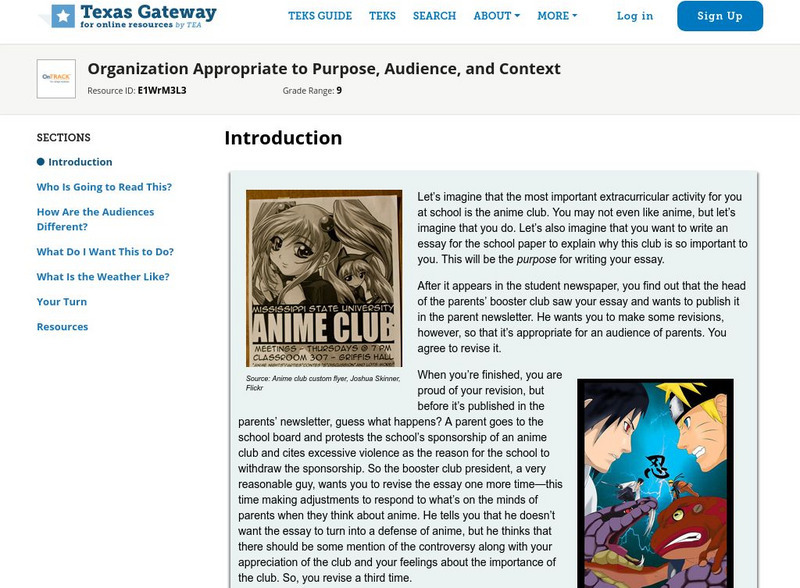Sophia Learning
Sophia: How to Take Research Notes
This tutorial focuses on how to take research notes using two slideshows. The first presentation compares taking research notes to class notes and offers 3 methods of note taking that would work for either: Cornell notes, index cards,...
Other
Educator Voices: Grade 3 Research Skills Unit
Describes the process teachers went through to create a lesson unit where students first brainstormed what it means to do research, then were tasked with choosing a topic, researching it, and presenting on it several days later. The...
FNO Press
Fno.org: Inspired Investigations
An article at From Now On about how to help students do better research by changing the focus of research assignments and teaching students to ask essential questions. Some suggestions include using mind mapping, and using Inspiration to...
University of South Florida
Fcat Express: Organizing Information
Strategies to help students organize information found in a text provided by a standardized test preparation site intended for fourth grade. Includes strategies such as graphic organizers, hierarchical summaries, KWL, and previewing.
Grammarly
Grammarly Handbook: Headings
This page focuses on the use of headings in a paper. The layout of the headings and subheadings should be determined before beginning the paper to make it easier to read and more attractive. Most important is to be consistent with...
Read Works
Read Works: Classify and Categorize 2nd Grade Unit
[Free Registration/Login Required] A series of three lesson plans designed to teach learners to classify and categorize items, characters, and information. The third lesson is based on the book Splish! Splash! Animal Baths by April...
Read Works
Read Works: Classify and Categorize 4th Grade Unit
[Free Registration/Login Required] A three-lesson unit on classifying and categorizing through which students learn how to organize research into an outline, use text features to locate information, and write a research report. Lessons...
Oswego City School District
Regents Exam Prep Center: Categorizing Data
Three lessons on different types of data (qualitative, quantitative, univariate, bivariate, biased data) as well as a practice activity and teacher resource.
National Council of Teachers of Mathematics
The Math Forum: Growth Creature Lab Data Collecting
Lesson plan completely explains how students will collect data on the growth of an "alligator" and determine the relationship of the growth data to the Fundamental Theorem of Similarity and to topics in geometry in general. All of the...
Lumen Learning
Lumen: Boundless Communications: Principles of Organization
This lesson focuses on the importance of organizing your speech including critically thinking about the contents of the speech, the components of the speech, the patterns of organization to fit the different types of speeches, and...
Lumen Learning
Lumen: Writing Process: Organizing
This lesson plan focuses on the organization of your paper including how to write a thesis statement, the elements of an effective paragraph, patterns of organization, transitions, and conclusions. It also provides a video of the Toulmin...
Teachers.net
Teachers.net: Awesome Authors Lesson Plans
Not only will you find a description of a good unit, but you will find all of the handouts you will need including directions, letter home explaining the unit, websites to be used, and worksheets.
Online Writing Lab at Purdue University
Purdue University Owl: Organizing an Exploratory Essay
This handout focuses on organizing exploratory or inquiry essays including the introduction, the body paragraphs, and the conclusion. W.11-12.2 Informative
Texas Education Agency
Texas Gateway: Organization Appropriate to Purpose, Audience, and Context
[Accessible by TX Educators. Free Registration/Login Required] This lesson will teach you how to write and organize an essay so that it addresses different purposes, different audiences, and different contexts.
BBC
Bbc Skillswise: Graphs: Lists and Tables
Resource shows how to use lists and tables to organize information.
National Council of Teachers of Mathematics
Nctm: Illuminations: State Names
Learners use multiple representations to display how many times the letters of the alphabet is used in a state name. Concepts explored: stem and leaf, box and whisker plots, histograms.
Louisiana Department of Education
Louisiana Doe: Curriculum Hub: Ela Guidebooks: Application Student Selected Task: Create an Outline
Complete an outlining section of the culminating task tool to organize supporting claims and evidence.
Discovery Education
Discovery Education: Animal Classification
Use this lesson to help students understand the reasons for classifications and ways that different species are separated.
Rice University
Rice University: The Hand Squeeze
Students will enjoy this data collection and class analysis experiment involving the time it takes for a hand squeeze to travel around a circle of people. From organizing the activity to collecting the data to making a table and graphing...
National Council of Teachers of Mathematics
Nctm: Figure This: Is There Room for All These Gifts?
This math challenge activity focuses on the concept of organizing information. Test your problem-solving aptitude as you try to figure out who received the most gifts.



